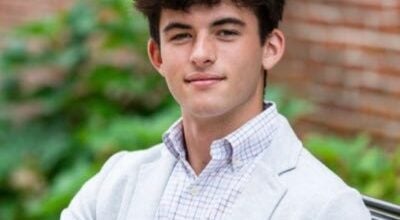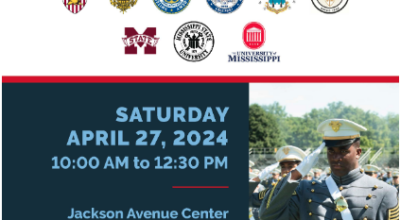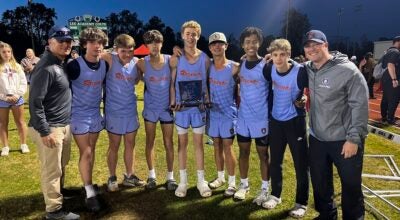Scholars present Current Research on Slavery at the University of Mississippi
Published 10:30 am Tuesday, July 24, 2018
The role of enslaved persons in the lives of University of Mississippi forefathers, as well as the university today, was a hot topic during the second day of the 2018 Faulkner & Yoknapatawpha Conference.
This year’s theme, “Faulkner and Slavery,” has created a venue for scholars from across the country to gather and discuss slavery as it pertains not only to the writings of Oxford’s favorite son, but also the foundation of the state’s flagship university. A discussion panel titled “Current Research on Slavery at the University of Mississippi” featured members of the university’s Slavery Research Group, who read papers about what they had discovered through the university’s archives and special collections.
Each author placed a personal emphasis on the issue, citing letters, meeting minutes and even slave ledgers to discover a deeper meaning behind the relationship between the University and those who built it.
The first paper, “Too Much his own Master,” was authored by PhD. student Chet Bush, who wrote about a slave known only as John. John was owned by state geologist and chemistry professor Eugene W. Hilgard. In December 1859, Chancellor Frederick Augustus Barnard wrote a letter to Hilgard expressing his frustration over John’s behavior.
“‘My dear doctor, there seems to be a hitch about John, and I may as well tell you of it.’ So began, as far as we know today, the story of John, an enslaved man claimed by Hilgard,” the essay said. “In a rush of prose, Barnard proceeded to dedicate an entire letter to John’s supposed transgressions.”
John was a charge of Barnard, but legally owned by Hilgard. While in Barnard’s keep, John was “hired out” to professors on campus. The incident detailed in the letter and essay involves the university’s proctor, W.J. Maloy, who requested John help him complete a project.
Maloy kept John busy, and ensured Hilgard in an earlier letter that ‘John is well and contented.’ However, John was soon relieved of his duties and returned to Barnard.
“‘John, Maloy complained, refuses to work Sundays, a matter indispensable with the university’s slaves,’” the essay read. “John had taken a stand against working on Sunday by aligning himself with the other college slaves who do not work on Sundays.”
This refusal caused a problem for the proctor and Chancellor, Bush wrote, because neither felt they had the right to “coerce” John to work through force. The letter concluded with Barnard stating John is “too much his own master to be any use” at the university.
The entire point of Barnard’s letter, Bush wrote, was to tell his colleague, “He is your slave. You figure out what to do with him.”
“John’s story demonstrates one of the creative ways that slaves working and living on the University of Mississippi Campus asserted autonomy and displayed self-determination in the antebellum period,” Bush wrote. “John, who was ‘too much his own master,’ laid claim to personal properties in solidarity with other slave laborers and secured for himself the reprieve from work.”
The second essay, “Pro-Slavery and States’ Rights Incubators: Fraternal Debate Societies at the University of Mississippi,” was written by PhD. student Andrew Marion. Marion’s essay detailed the ways students at the University were seemingly indoctrinated by pro-slavery ideology.
Marion spoke mainly about the two “fraternal debate societies” sanctioned by the University between the years 1848 to 1861.
“Mandatory participation in these societies put students in academic and extracurricular environments that promoted unwavering loyalty to the state of Mississippi and its most sacred institution: slavery,” Marion said. “The debate societies promoted their pro-slavery ideology.”
The University first established fraternal debate societies in the institution’s infancy, mandating that all students participate after a number of them, with all their free time, had caused trouble around campus and in Oxford. It provided an avenue to promote a pro-slavery agenda, Marion said.
One group in particular, the Phi Sigma fraternal debate society, commissioned the burning of two books the group deemed abolitionist literature. These societies also had the right to supervise and hire slaves as “college servants,” who were given jobs such as sweeping, cleaning spittoons and preparing fires. Perhaps, Marion said, a slave prepared the fire to burn the books.
The practice of keeping “college servants” continued until the university closed at the start of the Civil War.
“While many students came from slave-holding families or even held slaves themselves, the ability to supervise enslaved persons as part of a college-sanctioned activity allowed students to practice mastery over enslaved persons,” Marion said. “This reinforced the pro-slavery identity of the University.”
The third essay, “The World the Slaves Made: Slaveholding, Student Wealth and the Foundations of the University of Mississippi,” was written by associate professor Anne Twitty. The essay detailed the ways students at the University reached their success on the backs of enslaved persons, both on campus and back home.
Twitty presented antebellum students John Sanders, William Owens, Silas and Joshua McBee, Hubbard Sanders and Thomas P. Shields, all of whom, she said, received educations financed by the enslaved persons their families laid claim to. She also delved beneath the surface to uncover the names of some of the slaves from whose work they benefitted.
“Scholars today have made significant progress in not only identifying enslaved peoples who lived and worked on college campuses by revealing the centrality of their efforts to the day-to-day operation of such facilities,” Twitty said. “Little attention, however, has been paid to the role by the enslaved people laboring tens, if not hundreds, of miles away from institutions of higher learning, who likewise helped create and maintain them.”
The slave-based wealth of students and parents of students at the University of Mississippi between the years 1848 and 1861. Tuition at the University in these years, Twitty said, was costly at $156 a year. This is a significant sum, she said, because the nationwide per capita income was only $110.
In the university’s first three years of operation, she said, at least 172 students matriculated at the University of Mississippi. Of the 145 identified via the 1850 U.S. Census and for whom slaveholding documents exist, at least 138 students – 95 percent – owned slaves themselves or had parents who owned slaves. Collectively, this demographic owned 4,647 slaves.
“In far too many instances… this aggregate data may constitute all that we’ll ever know about enslaved people who underwrote the college educations of so many of the first University of Mississippi students,” Twitty said. “Forays into additional records sometimes offer the opportunity to recover the identities of at least a portion of these men, women and children.”
While the information presented by the Slavery Research Group may be hard to uncover or fully understand, Twitty explained the importance of telling these stories.
The University of Mississippi Slavery Research Group consists of nearly 40 members and spans across 17 different academic disciplines. During the discussion portion of the panel, Twitty admitted that, when she first started working with the group, she wasn’t sure how people would react.
“To a great extent, I think we anticipated more push-back than we actually received,” she said. “A lot of our strategy early on was trying to fly under the radar a little bit and do quite a bit of research before we exposed ourselves to public scrutiny. But I feel what we increasingly find is, when we do step more into the spotlight, that people are often far more receptive to this information than we anticipated.”





